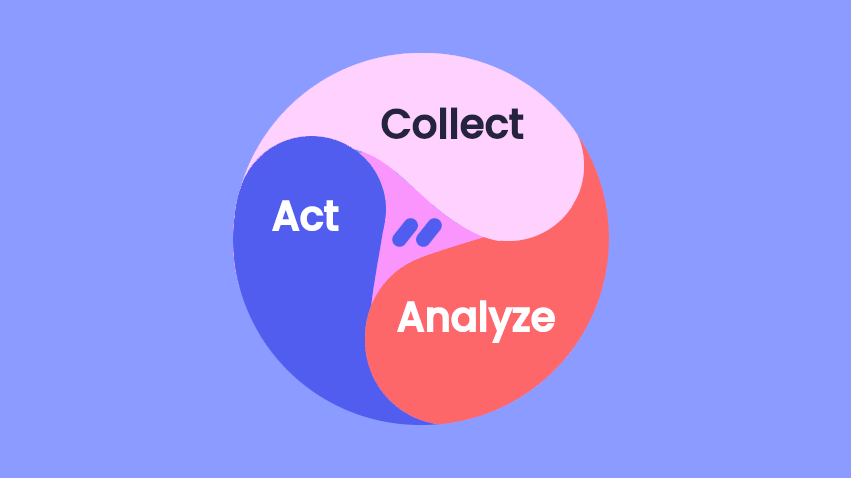There’s no doubt about it: customer experience is the new battleground for brands. Within this competitive arena, customer feedback is important. It comes directly from your most engaged audience – those who purchased your product – and expresses the issues, delights, and impacts of your brand experience.
Today, managing and responding to customer feedback is the name of the game. It’s what drives product improvements, repairs trust with detractors, and transforms happy customers into brand ambassadors.
At the same time, feedback is everywhere in our digital world. Managing customer feedback might sound like a no-brainer at first – but it takes a thoughtful strategy to do it right. So what makes great customer feedback management?
The customer feedback loop
Before we get into it, there are a few important steps involved in bringing CFM to life. The customer feedback loop is one way of visualizing the whole process. Let’s take a look:

It’s fairly straightforward: you collect all your data, analyze it, take relevant action, and repeat. A winning CFM strategy “closes” the loop so that all the feedback that comes in is turned into insights and action.
A winning CFM strategy “closes” the loop so that all the feedback that comes in is turned into insights and action.
Yet, just having an airtight customer feedback loop isn’t everything. A key ingredient of great CFM is speed. Real time responses to reviews, quick implementation of requested product improvements – fast action is the most valuable piece of the puzzle. But how do you do it all so fast?
The role of automation
Even with a decent sized team, chances are it’s a massive task to collect all your feedback – let alone analyze it! Manually going through feedback might work for 50 reviews, but it doesn’t stand up to large volumes of data. This is where automation comes in. At each stage of the customer feedback loop, automation can make a huge difference.
Data collection
Tech has advanced a great deal to aid in not only managing customer feedback, but gathering it in the first place. Software solutions can now integrate directly with CRMs, helpdesks, and review platforms for automated data collection.
Without the need to search for or upload data on your own, CFM becomes a whole lot faster. You’ll also get a more holistic view of your data that would be much harder to achieve manually. This goes a long way to make you confident that your CFM insights are representative of all your feedback.
Without the need to search for or upload data on your own, CFM becomes a whole lot faster.
Analysis
Then there’s AI. Machine learning and text analytics algorithms take your data as input and give you all sorts of useful insights as output. They detect trends, identify sentiments, flag problems, and even uncover insights that might have gone overlooked by manual analysis.
For example, let’s say you released a new package for your product. You could get insights on why you’ve seen a spike in reviews or support tickets. Text analytics would automatically categorize the new feedback and show you how your customers are responding to the release.
You’d get these insights right away – and even better, you’d continue to get them as long as they’re relevant. While you might be able to do manual feedback analysis once a month or after a big product launch, automated text analytics is always working to keep your finger on the pulse of your customers.
Taking action
Being proactive is one of the most valuable ways to deliver great customer experiences. Of course, taking action isn’t so easily automated – but there are still some ways that automation can improve the process.
This is where alerts come in handy. Notifications for negative trends or detractors help you respond in time so you can improve the customer experience. After all, automation isn’t so great if you can’t use it to take action faster.
